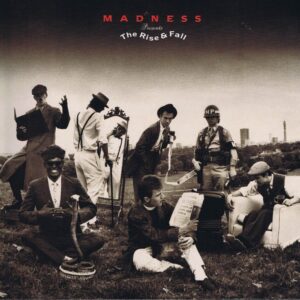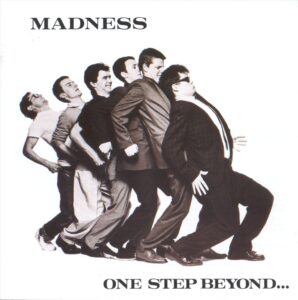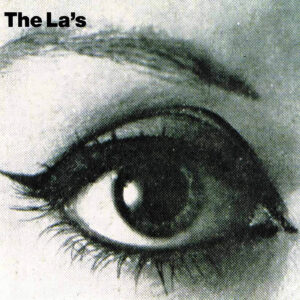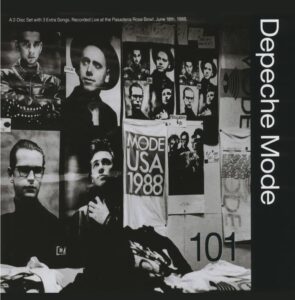Hi-Fi amplifiers, also known as high-fidelity amplifiers, are a critical component in any high-quality audio system. These amplifiers are designed to reproduce sound with as much accuracy and clarity as possible, making them a popular choice among audiophiles and music enthusiasts.
One of the most important things to understand about Hi-Fi amplifiers is that they come in two main types: solid-state and tube amplifiers. Solid-state amplifiers use transistors to amplify the sound, while tube amplifiers use vacuum tubes. Each type has its own advantages and disadvantages, and the choice between them ultimately comes down to personal preference.
Solid-state amplifiers tend to be more affordable and reliable, and they typically offer better performance at high volumes. They also tend to have a more neutral sound, which means they reproduce the sound with as little coloration as possible. On the other hand, tube amplifiers are known for their warm, rich sound that can add a pleasing distortion to the music. They tend to be more expensive and less reliable, but some audiophiles swear by their sound quality.
When shopping for a Hi-Fi amplifier, it’s important to consider a few key factors. One of the most important is power output, which is measured in watts. The higher the wattage, the more power the amplifier can deliver to your speakers. However, it’s important to remember that wattage isn’t everything – other factors like distortion, frequency response, and damping factor can also have a significant impact on sound quality.
Another important consideration is connectivity. Most Hi-Fi amplifiers offer a range of input and output options, including analog and digital inputs, speaker outputs, and headphone jacks. Make sure the amplifier you choose has all the inputs and outputs you need to connect your audio sources and speakers.
Build quality is also important. Look for an amplifier that is well-built with quality components that can handle the demands of high-quality audio. A good amplifier should also have plenty of ventilation to prevent overheating, and it should be easy to access the internal components in case repairs are needed.
In conclusion, Hi-Fi amplifiers are an essential component of any high-quality audio system. Whether you prefer the neutral sound of a solid-state amplifier or the warm, rich sound of a tube amplifier, there are plenty of options available to suit your preferences and budget. When shopping for an amplifier, be sure to consider factors like power output, connectivity, and build quality to ensure you get the best possible sound quality from your system.
Solid State vs Tube amplifiers
Solid-state amplifiers and tube amplifiers are two distinct types of Hi-Fi amplifiers, and each has its own unique characteristics and sonic characteristics.
Solid-state amplifiers use transistors to amplify the signal from the input source. They are typically more reliable, efficient, and affordable than tube amplifiers. Solid-state amplifiers are also capable of delivering higher power output and can handle larger loads, making them ideal for driving larger speakers or for use in live sound reinforcement applications.
One of the main advantages of solid-state amplifiers is their ability to produce a very clean, accurate sound. They have a very low distortion rate and tend to be very neutral in their sound signature. This can be ideal for those who want a transparent and uncolored sound reproduction that does not change the character of the original recording.
On the other hand, tube amplifiers use vacuum tubes to amplify the signal from the input source. They are typically more expensive and less reliable than solid-state amplifiers, but they are known for producing a warm, rich, and musical sound that many audiophiles prefer. Tube amplifiers can also add a subtle distortion to the sound, which can be very pleasing to the ear.
Tube amplifiers tend to have a more “colored” sound signature than solid-state amplifiers. This is because the tubes themselves can have a significant impact on the sound quality of the amplifier. Tube amplifiers are also less efficient than solid-state amplifiers and tend to produce less power output. As a result, they may not be ideal for driving large speakers or for use in live sound reinforcement applications.
In summary, solid-state amplifiers are generally more reliable, efficient, and affordable than tube amplifiers. They tend to produce a very clean, accurate, and neutral sound that is ideal for those who want a transparent and uncolored sound reproduction. Tube amplifiers, on the other hand, are known for producing a warm, rich, and musical sound that many audiophiles prefer. They can add a subtle distortion to the sound, which can be very pleasing to the ear, but they are generally less efficient and more expensive than solid-state amplifiers. Ultimately, the choice between solid-state and tube amplifiers comes down to personal preference and the specific requirements of the audio system.
Power, Pre and Integrated amps
Power amplifiers, preamps, and integrated amplifiers all serve different purposes in a Hi-Fi system. Power amplifiers deliver a clean, powerful signal to speakers, preamps provide control and processing of the audio signal before it is amplified, and integrated amplifiers combine the functions of both preamps and power amps in a single unit. Each type of amplifier has its own unique features and advantages, and the choice between them ultimately comes down to personal preference and the specific requirements of the audio system.
Power amplifiers are designed to amplify the signal from a preamp or integrated amplifier and deliver it to speakers. They typically have no tone controls or other processing features, and their main function is to deliver a clean, powerful signal to the speakers. Power amps come in different power ratings, usually measured in watts, and the power rating determines how loud and clear the sound can be delivered.
Preamps are designed to provide control and processing of the audio signal before it is amplified by the power amplifier. They usually include features like volume control, tone control, and input selection. Preamps can also include advanced processing features like equalization, balance, and tone shaping. Preamps are typically used with power amps, but they can also be used with integrated amplifiers or receivers that have a built-in power amp.
Integrated amplifiers combine the functions of both preamps and power amps in a single unit. They are designed to provide a complete, all-in-one solution for powering speakers and controlling the audio signal. Integrated amplifiers typically have features like volume control, tone control, and input selection, as well as a built-in power amplifier. They can also include advanced processing features like equalization, balance, and tone shaping.
Integrated amplifiers are a popular choice for those who want a simple and convenient solution for their Hi-Fi system. They offer a compact, all-in-one design that saves space and reduces clutter. They can also be more affordable than separate preamp and power amp components.
Classic Amplifier brands
Marantz is a brand that was founded in the 1950s and has since become synonymous with high-quality audio equipment. They are known for their warm, musical sound signature and have a reputation for producing some of the best tube and solid-state amplifiers in the industry.
McIntosh is highly respected for its high-end audio equipment. They are known for their iconic blue meters and have a reputation for producing some of the most powerful and high-quality amplifiers in the industry.
Pioneer is known for its innovative and high-quality audio equipment. They are especially well-known for their amplifiers and have produced many classic models over the years, including the SA-9500, SA-8800, and SA-9800.
Yamaha has been around since the late 1800s and is known for its high-quality musical instruments and audio equipment. They are especially well-known for their amplifiers and have produced many classic models over the years, including the CA-1000, CA-2000, and CA-2010.
NAD was founded in the 1970s and is known for its high-quality, affordable audio equipment. They are especially well-known for their amplifiers and have produced many classic models over the years, including the 3020 and 3225PE.
These are just a few examples of classic amplifier brands that have a long history in the audio industry and are highly respected for their quality and performance. Other notable brands include Krell, Rotel, Naim, and Thorens, among others.
-

When She Walks In The Room: An Ode to Bryan Ferry’s Musical Alchemy
-

XTC: The Band That Redefined British Pop
-

Madness: The Rise and Fall – A Nostalgic, Melancholy and Jubilant Masterpiece
-

Exploring the Depths: Top Ten Tracks by Daughter
-

Madness’s Top 10 Hits: A Journey Through Ska-Pop Excellence
-

Revel in the Sonic Ecstasy of Roxy Music’s 1973 album “For Your Pleasure”
-

David Bowie’s 5 Iconic Personas: A Musical Journey Through Time
-

David Bowie: A Unique Musical Chameleon with 10 Essential Albums and 5 Iconic Tracks
-

The La’s: A Timeless Tale of British Rock Brilliance
-

Unveiling the Top 20 Singles and Tracks by The Smiths: A Journey Through Their Timeless Hits
-

The Indie Music Revolution: A 50 year Journey Through Sound
-

Saint Etienne: Genre Fusion Pioneers and Timeless Sonic Innovators
-

James: Exploring Essential Albums, Tracks, and Their Lasting Legacy
-

The Top 20 Christmas Songs of All Time
-

Escapology: Robbie Williams’ Musical Journey Unveiled
-

Exploring “Hounds of Love”: A Masterpiece of Artistry and Innovation
-

Synth-Pop: A Journey Through the Electric Soundscapes of the 20th Century
-

Depeche Mode: Synthesizing the Sound of a Generation
-

Soft Cell’s “This Last Night in Sodom” 1984: A Dark and Provocative Musical Journey
-

Soft Cell: Synth-Pop Pioneers Who Redefined Music
-

The New Wave of Music: A Journey Through Innovation
-

Brian Eno: The Innovator of Ambient Soundscapes
-

7 Fascinating Insights into ‘Actually’ by Pet Shop Boys
-

Pet Shop Boys: A Synth-Pop Odyssey
-

25 Essential Pop Albums Redefining Musical Landscapes

























